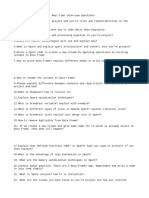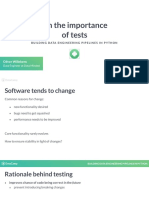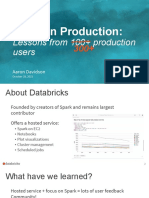0% found this document useful (0 votes)
88 views43 pagesData Bricks
The document discusses Azure Data Bricks including creating a workspace, clusters and notebooks. It covers using Data Bricks to run Spark jobs and accessing file systems. Mounting external storage and managing secrets is also covered.
Uploaded by
vasuCopyright
© © All Rights Reserved
We take content rights seriously. If you suspect this is your content, claim it here.
Available Formats
Download as DOCX, PDF, TXT or read online on Scribd
0% found this document useful (0 votes)
88 views43 pagesData Bricks
The document discusses Azure Data Bricks including creating a workspace, clusters and notebooks. It covers using Data Bricks to run Spark jobs and accessing file systems. Mounting external storage and managing secrets is also covered.
Uploaded by
vasuCopyright
© © All Rights Reserved
We take content rights seriously. If you suspect this is your content, claim it here.
Available Formats
Download as DOCX, PDF, TXT or read online on Scribd
/ 43



























































